Sonder: Exploration of Vivid Reflection
In response to the closing of the Grand Valley campus, the GVSU Art Gallery supports the hard work of the Winter 2020 senior photography students and their online exhibition.
See the full collection of images at www.sonder-exhibition.com.
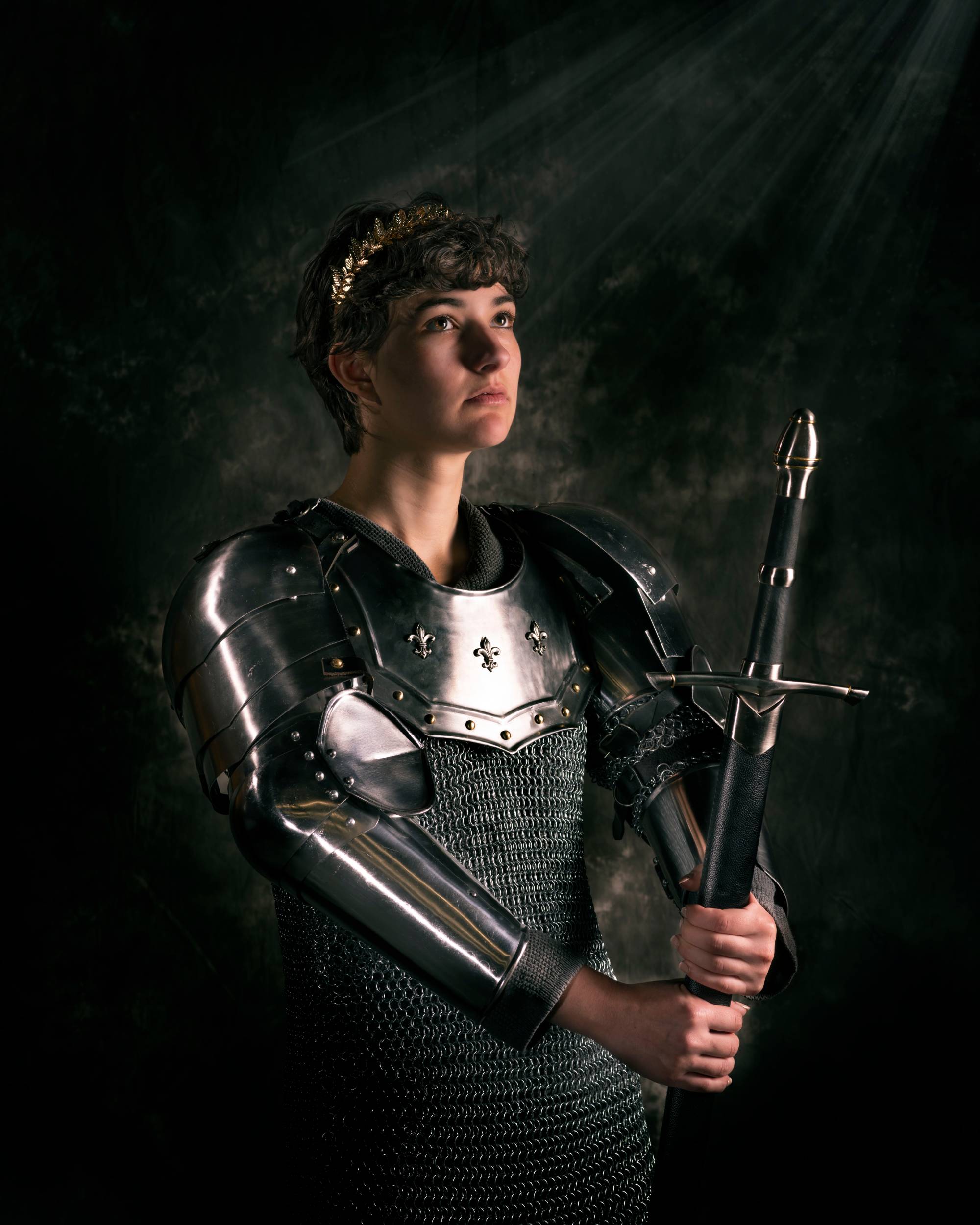
Christopher Bergeron
The images in this work are rooted in my discovery of art as a child. I was very fortunate to be born into a military family that, during my formative years, was stationed in Europe. My mother made it her personal mission to ensure her children experienced the great works of the European masters. I explored famous works of art firsthand, and I was exposed early to painters like Caravaggio and Rembrandt. For me, those two names became synonymous with great art.
As I grew as an artist, I was drawn to portraiture, and, more specifically, portraiture lit with controlled, directional light. I have captured the aesthetic Late Baroque oil paintings in this body of work. I used historic clothing and props to reinforce the mood and texture that directional light emphasizes. The use of lowkey lighting will always have a place in art as its ability to transfer the two-dimensional plane into something that has believable three-dimensional depth.
(image: Joan, digital photograph, 2020)
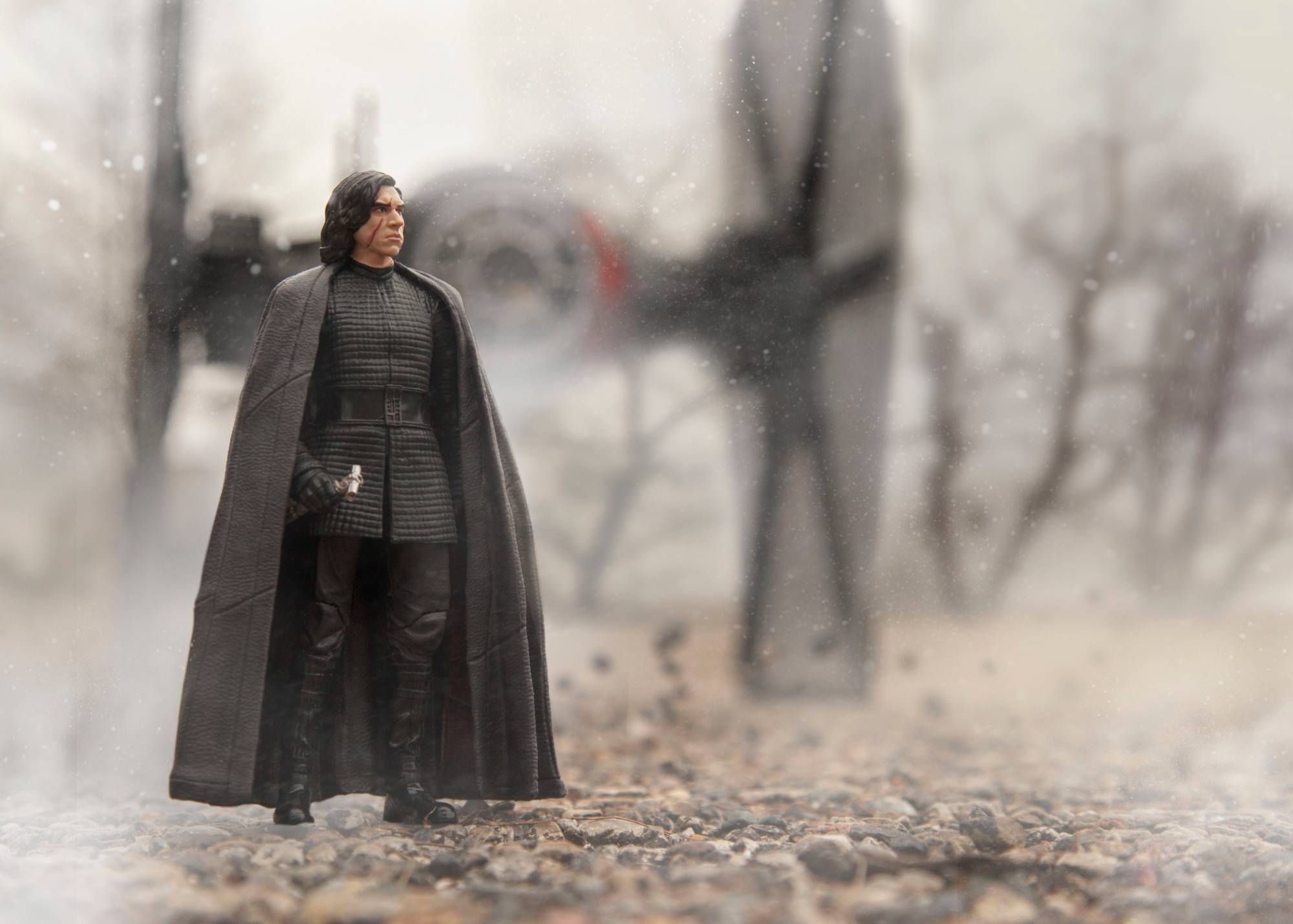
Kelsey Boven
When I first began my journey studying photography, the first roll of film I ever shot featured photographs of a Star Wars action figure I played with as a child. They were terrible. After many years of study and practice, I wanted to bring that action figure, among others, to life once more. Through the use of practical and special effects, I created lifelike scenes of characters that I love dearly, showcasing the many lessons that Star Wars has taught me throughout my life. With themes like hope, anger, adventure, and change, this series inspires the viewer’s imagination, and helps them reignite the childlike wonder so many of us have left behind.
(image: Kylo, digital photograph, 2020)
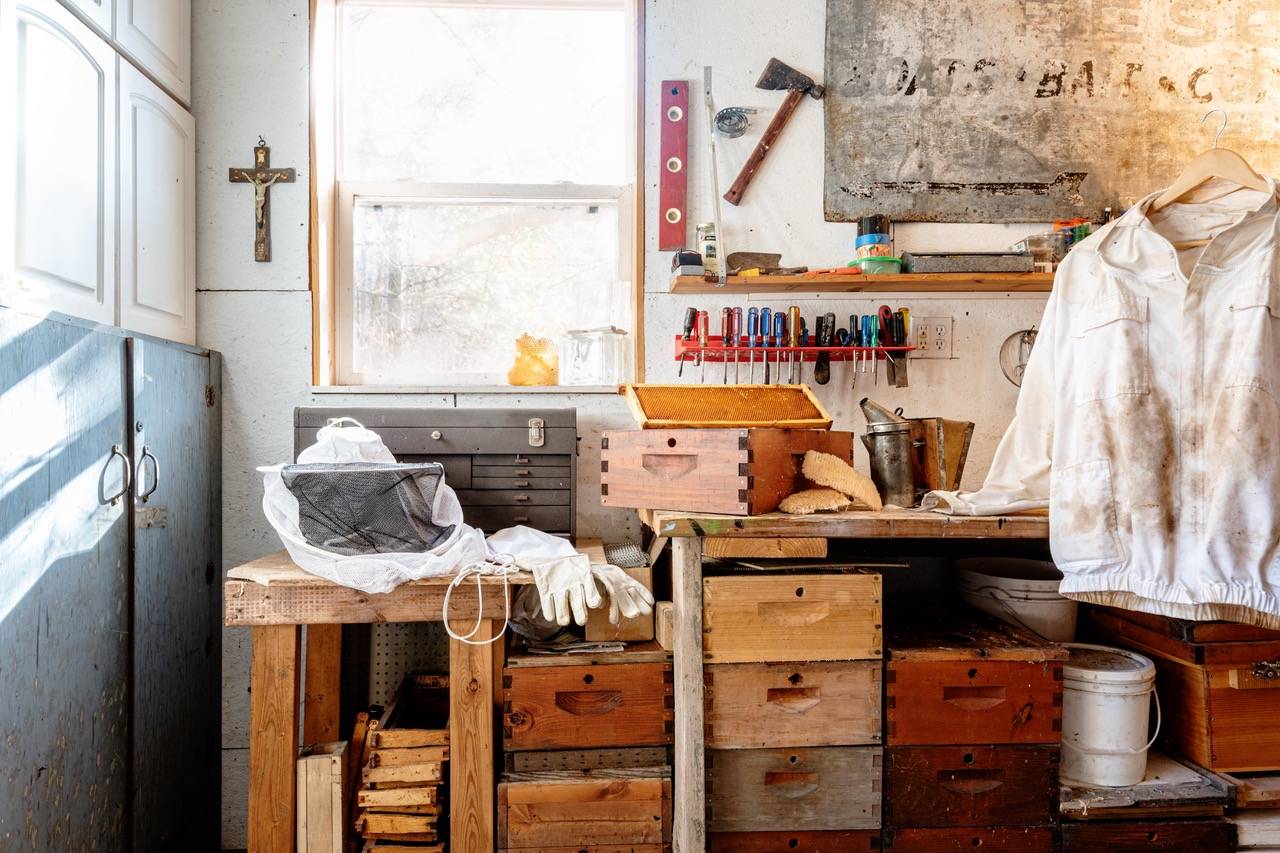
Dana Dziedzic
At the age of 20, I lost my mother and father within five months of each other. The death of a loved one is not a rare occurrence, and it’s hard to imagine what grief is like until it is directly in front of you. Through my grieving process, I learned that I was not alone with my grief. It is a topic that is not often talked about in our society, but we should because it has, is and will happen to everyone.
Forward is a series of photographs that reflect on how even after someone passes away, they remain with us in objects, memories, and spaces. The quality of light within the images provide a unique perspective to loss and grief, highlighting it in a positive light rather than a negative one. We do not move on from the people that we have lost, we simply move forward with them.
(image: Bee Keeper, digital photograph, 2020)
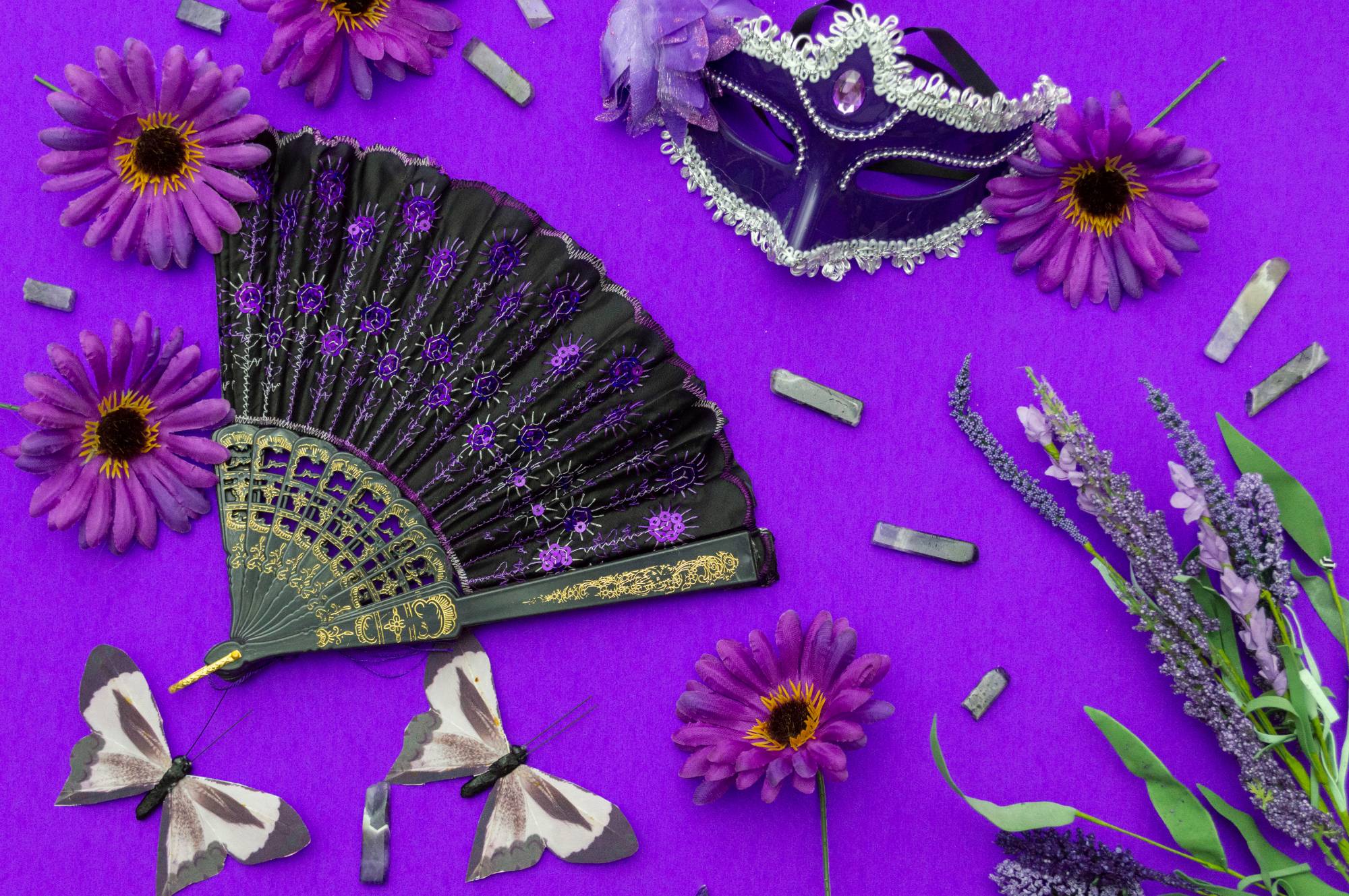
Abigail Emens
In a world where color is everywhere, did you know that it subconsciously impacts your everyday life? My series explores the connection between color psychology and human perception. Using multiple color strategies, such as isolated color and complementary color, as well as settings and objects, I’ve created a social experiment that explores how an audience reacts to images based on the color schemes used within the photos. This experiment will be measured by using a small questionnaire that is offered to every viewer. My goal is to show that peoples’ perception of different colors can directly correlate to their emotional process of what they are viewing. These personal experiences can be heavily tied into social constructs, which plays another role in this experiment. For years, I’ve been fascinated with the concept of color psychology and how certain shades and hues can have a significant impact on a person’s mood and senses. What started out as an interest in color theories has now become the basis of my body of work. With influences from artists like Penelope Umbrico and Ted Gore, my aim is to expand the audiences understanding of color and how strong of an impact it can play into our perceptions.
(image: Untitled, digital photograph, 2020)
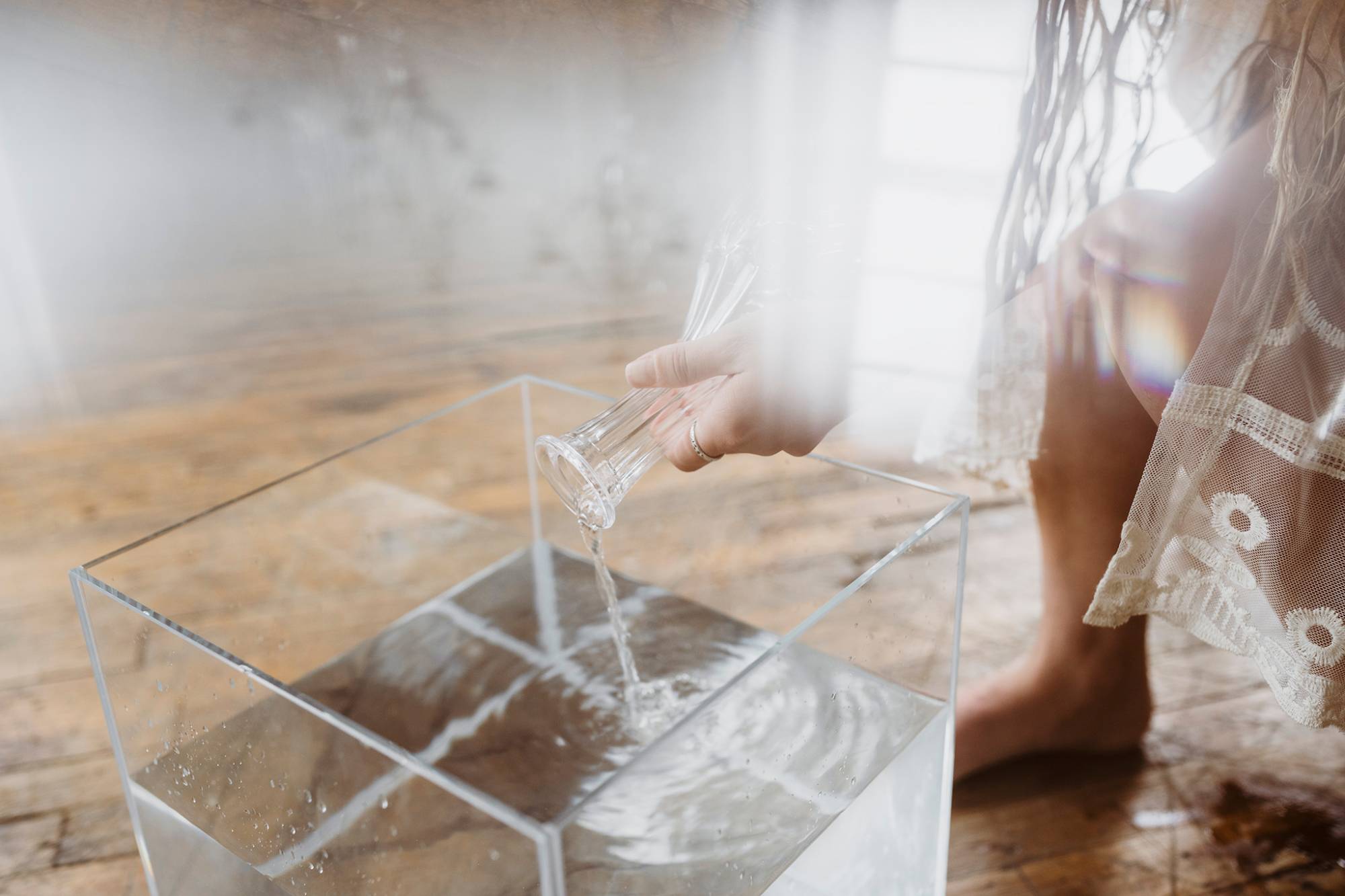
Rachel Falardeau
Around the exact time I started to really dive deep into photography, I was also diagnosed with anxiety and depression, something that affects 1 in 5 people in the United States.
To me, this series is not about my struggle with anxiety and depression. It is about my journey of self love through it all. A therapist once told me, the best thing you can do is take care of yourself. Even if that means all you accomplish one day is taking a shower. Using the element of water, I am showing my personal ritual of self care and self love.
My goal for these images is to appear dreamlike and have a sense of safety. I want to open the conversation about things we can do to take care of ourselves and to inspire others to prioritize their own self care.
(image: Untitled, digital photograph, 2020)
[1586533787].jpg)
Garrett Hein
Photography, for me, is a means to representing how I see. Looking at
a painting, you understand it’s an interpretation of reality in some
way. It may be photo-realistic, it may be believable, but you are
suspending your disbelief to some end in the same way you do reading a
novel or watching a movie. Photos are, generally, thought of as more
authentic than that—that they are more truthful, a more accurate
representation of reality. To me, that is not enough. There is often,
in my mind, a slightly different version of the reality in front of
me, though no less real. I want to photograph it; I want to make it real.
These images attempt to make the unreal, real. Or to make real a
possibility. Maybe I staged something. Maybe I manipulated an image to
complete a scene in my mind. But the truth is that all of these images
are real. Or perhaps they are only real in the way an oil painting
depicts a real event. Either way, I question what barrier exists
between reality and fiction.
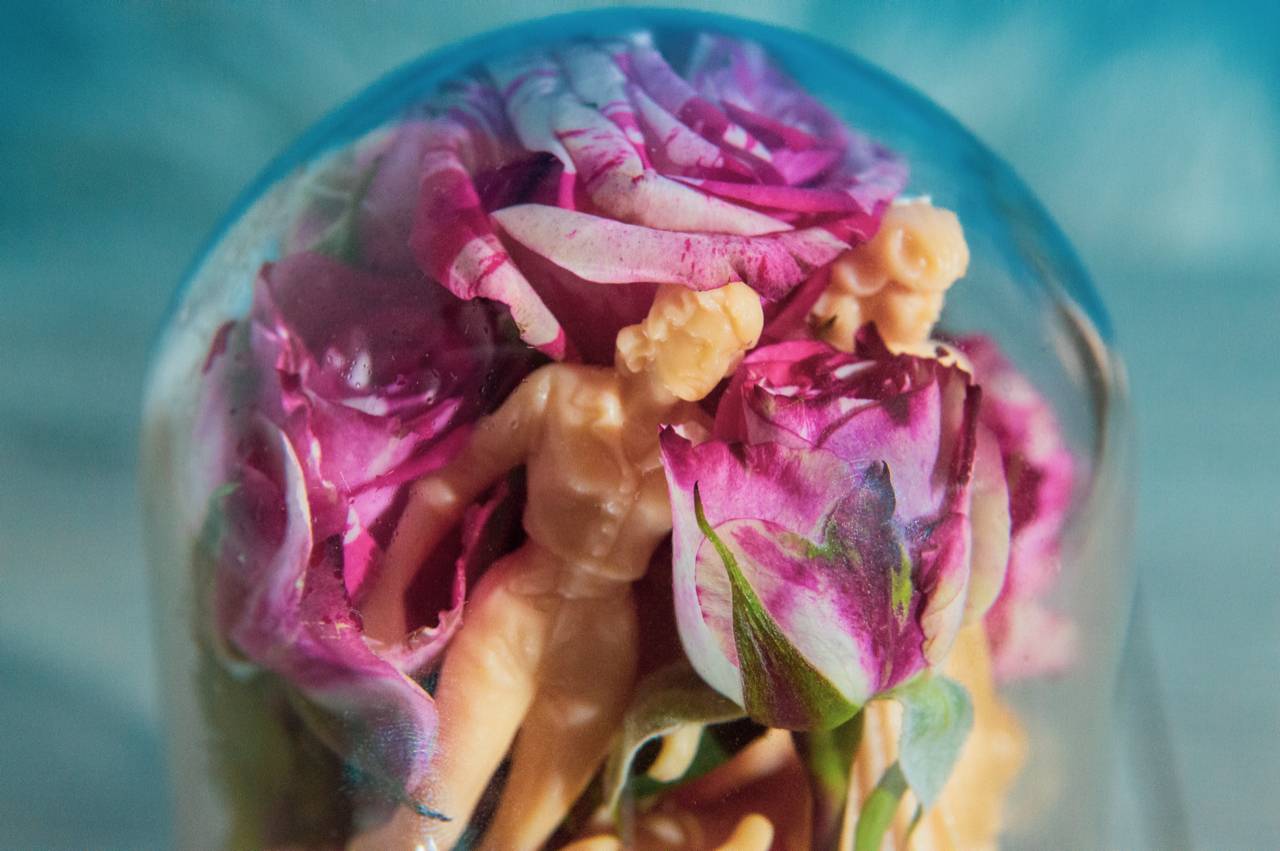
Allison Jeffreys
Like most individuals I experienced heartache as a child, but that fragment of heartache did not entirely define my childhood experience. The years of my youth were filled with countless moments of joy from the times I traveled with my parents to my mother’s lovely home country of Venezuela, journeyed to and from my birth state of Florida by car, and the many summers spent on the lapis blue waters of Lake Michigan.
This series of photographs is a representation of emotions I have felt based on certain memories. Included are also depictions of my burdens because I believe that without them gratitude cannot be rewarded, and growth cannot transpire. The use of the unpainted pale-yellow colored figurines allows for the photographs to be open for interpretation to a broader audience. Similarly, the use of both male and female figurines also allows for a broader interpretation.
The figurines are occasionally placed in a glass bell jar which suggests the abysmal sensation of isolation I have encountered and also my conscious awareness that the emotions will not be eternal.
(image: Rose, digital photograph, 2020)
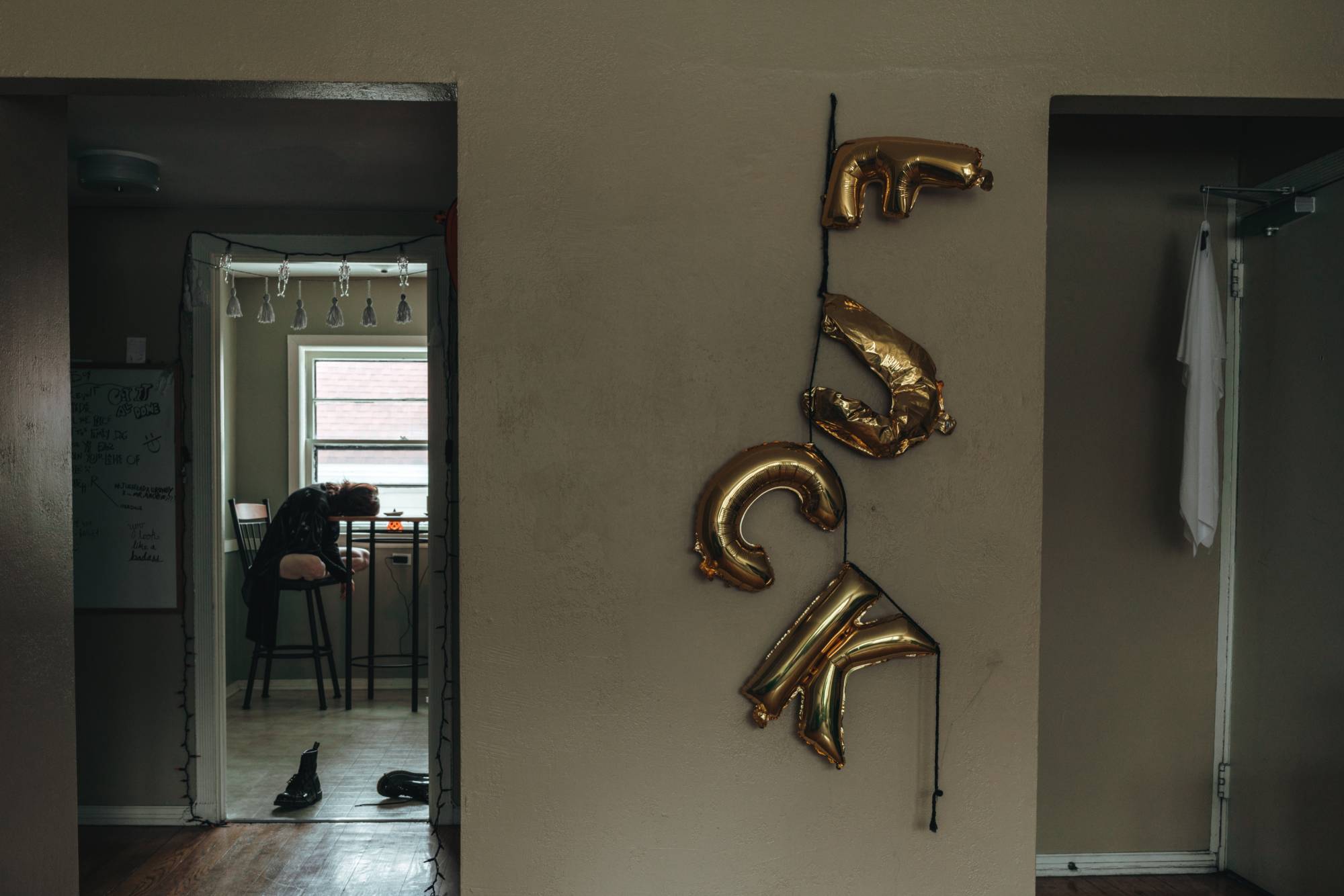
Jenna Pewarchie
This project is rooted from a grief I never thought I’d experience so soon - the sudden and unexpected death of my father. In this series of portraits, I am capturing the vulnerability of others who are dealing with the weight of loss, dysfunction and coping, by paying attention to the quiet and still moments that are otherwise kept hidden within the private corners of our life. Through the representation of these personal grief narratives, I hope to highlight the way loss manifests into many forms and how these humans are navigating the flux within the everchanging tides of grief. By providing an outlet for those innermost negative stories it can inspire that vulnerability can be beautiful. That these images can encourage a sense of community and acceptance. That even through the isolation of your own grief narrative...you are not alone.
(image: Untitled, digital photograph, 2020)

